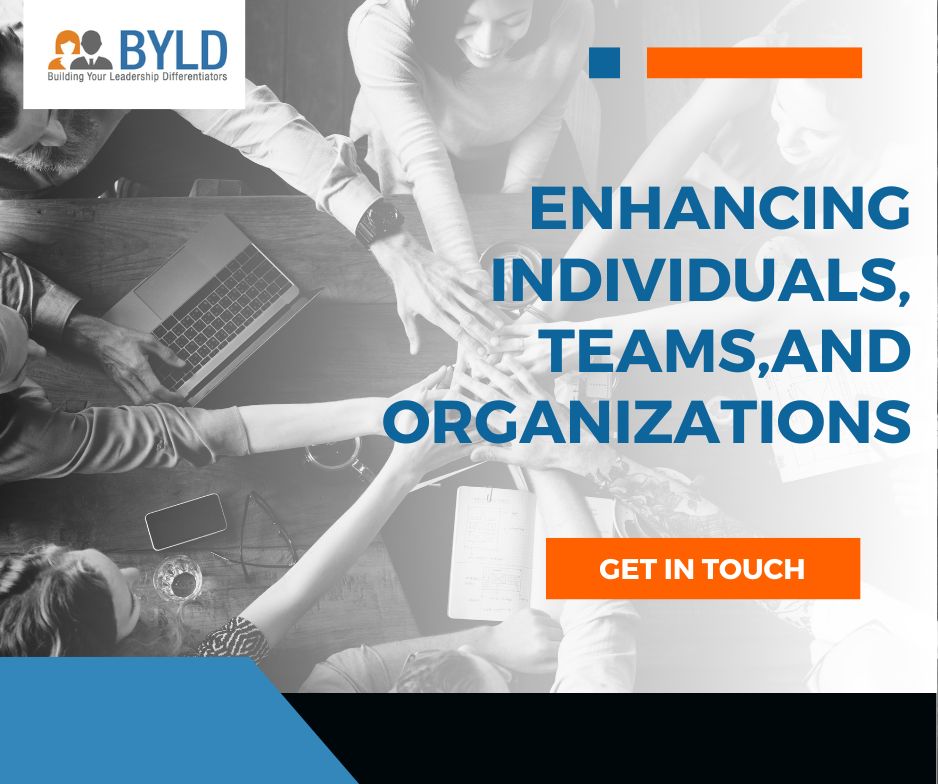
What is Team Collaboration and Why It is Important
- November 21, 2025

This may come as a surprise, but 86% of workers and executives say that failures at work are due to poor communication and failures to work together. Teams have to work together even more these days because businesses move so fast. Disconnected teams not only slow down project timelines but also lead to disengaged employees, lower morale, and reduced productivity. People who do their jobs alone instead of as a team can cost companies the efficiency, creativity, and edge they need to be successful in the long run.
The good news is that this challenge is not insurmountable. An organization can change how employees feel, get more of them involved, and push everyone to do better work by making the workplace more collaborative. Collaboration allows people to solve problems, learn new things, and share ideas. This makes everyone feel important, connected, and pushed.
This blog serves as your complete guide to boosting team collaboration and enhancing employee engagement. We’ll talk about practical ways to improve communication, break down barriers, and make the workplace more like a team. There is also a direct link between how happy and productive workers are and how well their teams work together. By the end of this guide, you’ll know how to create a successful workplace where partnership isn’t just a buzzword but a daily habit. This will lead to engaged employees who care about the success of your business.
What is Team Collaboration and Why Does It Matter?
Team collaboration is far more than simply working alongside colleagues. While many organizations equate collaboration with cooperation, true collaboration involves active engagement, shared responsibility, and open communication to achieve a collective goal. Everyone on the team knows something and has an idea. When everyone works together, they accomplish more than any one person could have done on their own.
Several core elements define an effective collaborative environment:
- Open communication: To make sure everyone is on the same page and understanding, team members share information, progress, and problems on a regular basis.
- Employees feel safe sharing their thoughts, taking risks, and giving helpful feedback without worrying about what other people might think.
- Shared accountability: Each member understands their role, responsibilities, and how their contributions impact team success.
- Collective problem-solving: different points of view are used to come up with creative solutions and better choices.
- Aligned goals: Teams work toward common objectives that motivate individuals and create a sense of purpose.
When these elements are in place, team collaboration becomes a sustainable practice rather than an occasional effort. It not only speeds up work, but it also creates an environment where employees feel connected, motivated, and free to make their full contributions.
The Relationship Between Team Collaboration and Business Success
The impact of team collaboration goes beyond team cohesion—it directly affects employee engagement and overall business performance. Teams that work together are more creative, productive, and durable because they can use the strengths of each member to solve tough problems. Organizations that invest in collaboration see measurable benefits, including:
- Better problem-solving: combining different points of view leads to faster, more effective solutions and avoids mistakes that cost a lot of money.
- Boosted innovation: Teams that collaborate openly are more likely to develop creative ideas and implement improvements that drive business growth.
- Higher employee participation: When employees feel like their contribution is valued, they are more motivated to do their best, stay with the company, and participate more.
- Better productivity: When people work together, they cut down on waste, speed up processes, and make the best use of resources.
- Stronger organizational culture: Working together builds trust, responsibility, and mutual respect, which makes for a good work environment that attracts and keeps good employees.
For example, when companies start cross-functional collaboration programs, projects are often finished faster, knowledge sharing goes up, and employee satisfaction goes up. Organizations build a base for innovation, resilience, and long-term growth by making collaboration a strategic priority.
In conclusion, team collaboration is a critical driver of both employee engagement and organizational success. It changes how employees work together, makes it easier to solve problems, encourages new ideas, and improves the overall experience of employees. Today’s fast-paced, connected world makes it not only a good idea for businesses to build a culture of collaboration, they need to do it.
Read More – Employee Engagement Activities: Strategies to Enhance Motivation and Team Collaboration
How Employee Engagement Fuels Team Collaboration
Employee engagement is the driving force behind effective team collaboration. Engaged employees are motivated, committed, and emotionally invested in their work, which translates into higher participation, open communication, and a willingness to contribute ideas. Employees who are engaged work together, solve problems, and help each other, which makes the workplace cohesive and productive. Employees who are disengaged may just finish their work without giving it much thought.
A real-life example illustrates this connection clearly. Consider a global software company that struggled with siloed teams and delayed project timelines. Leadership chose to put money into programs like regular recognition programs, mentorship opportunities, and open communication channels that are meant to get employees more involved. As employees began to feel valued and heard, their willingness to participate in cross-functional projects increased significantly. Teams shared information more freely, came up with new ideas together, and came up with new ways to solve problems, which led to faster project completion and happier clients. This proves that engagement isn’t just a nice-to-have metric; it really does help teams and companies work together better.
Key Drivers of Employee Engagement in a Remote-First World
We live in a hybrid workplace, so you need to plan ahead to keep your employees interested, motivated, and able to work together. The following drivers are essential for building engagement and enhancing team collaboration:
- It’s important to be clear with your employees about what you expect from them. Regular updates and letting them talk to you will help them feel informed, valued, and connected to the organization’s goals.
- Recognition and appreciation: Publicly recognizing the contributions of both individuals and teams encourages good behavior, gets more people to participate, and makes working together stronger.
- Chances to grow: Training programs, mentorship, and skill-building initiatives keep employees interested, motivated, and more willing to work with others.
- Autonomy and empowerment: Giving your employees a say in how the business runs makes them feel like they own it and makes them more likely to work together.
- Community building: Virtual team-building exercises, informal check-ins, and social activities strengthen interpersonal relationships and trust, even across distributed teams.
- Feedback culture: Regular, helpful feedback makes it possible to get better, learn, and talk to each other freely, which improves both collaboration and engagement at the same time.
Some practical ways to get employees more involved are to hold weekly team meetings, start peer recognition platforms, hold skill-development workshops every three months, and give employees chances to share their ideas through suggestion portals or innovation sessions. By implementing these strategies, businesses can make a culture where people are naturally more engaged, which leads to better teamwork.
The link between engagement and collaboration is undeniable: engaged employees communicate more effectively, share knowledge openly, and take collective ownership of projects. They feel a sense of purpose and connection that translates into meaningful contributions, driving both team performance and individual satisfaction. Focusing on employee engagement not only gets people to work together, but it also brings in new ideas and makes the workplace a better place to be.
In summary, employee engagement is the engine that powers successful team collaboration. Employers can encourage teamwork and individual contributions by providing incentives, public praise, opportunities for advancement, and clear lines of communication. People who like their jobs are more likely to work together, share new ideas, and make the workplace strong and healthy, which is good for the business in the long run.
Role of Leadership in encouraging a Collaborative Environment
A truly collaborative environment begins with leadership. Supervisors make sure that everyone on the team knows what the goals are, how to act, and what they can do to help. This helps everyone work together better. Effective leaders demonstrate transparency, empathy, and active listening, fostering trust and psychological safety within teams. It’s easy for employees to work together when they feel comfortable sharing their thoughts, getting feedback, and taking risks.
Transparent communication is central to leadership-driven collaboration. Leaders must clearly articulate organizational goals, individual roles, and how each contribution supports the larger mission. This will help them ask questions, voice concerns, and find answers more quickly if they can talk to each other. This gets more people involved and makes the whole team stronger. Leaders who recognize and celebrate team successes also encourage their employees to keep working together, which builds momentum for long-term teamwork.
Empowering employees is another vital leadership strategy. Giving team members the power to make choices, own projects, and help solve problems makes them more responsible and encourages them to work together actively. By supporting autonomy and promoting shared responsibility, leaders cultivate a sense of belonging and meaning that is, crucial for both employee engagement and overall productivity.
The Right Tools for Effortless Team Collaboration
In modern workplaces—especially remote or hybrid settings—the right technology is essential to support team collaboration. The proper tools streamline communication, facilitate project management, and enable employees to work together effortlessly, regardless of location. Some key solutions include:
- Project management platforms: Asana, Trello, and Monday.com are some of the tools that help teams organize their tasks, keep informed of their progress, and hold each other accountable. This keeps all of the projects on track.
- Messaging and teamwork apps: Sites like Slack, Microsoft Teams, and Google Chat let people talk to each other right away, make decisions quickly, and share ideas effectively.
- Video conferencing solutions: Zoom, Microsoft Teams, and Google Meet provide face-to-face interaction, enhancing connection, clarity, and assurance in virtual teams.
- Collaborative document platforms, like Google Workspace and Microsoft 365, let more than one person on a team work together to write documents, spreadsheets, and presentations at the same time. This makes work more efficient and cuts down on version control problems.
- Feedback and recognition platforms: Tools that facilitate constructive feedback and recognize contributions help maintain engagement and encourage collaborative environment.
Even though technology can make working together a lot easier, it works best when used with good leadership. Leaders must guarantee that employees are trained on these tools and understand how to use them to foster transparent communication, streamline workflows, and maintain accountability.
Setting up regular team meetings, cross-functional workshops, brainstorming sessions, and virtual or in-person team-building activities are also useful ways to make a workplace where people can work together. Promoting mentorship and peer learning makes relationships and sharing of knowledge even stronger, which supports a culture of working together.
By integrating leadership excellence with the right tools and structured practices, organizations can build a collaborative environment that drives innovation, engagement, and long-term success. Strong leadership builds trust and alignment, and technology makes communication easy and teamwork effective. All of these things work together to make a workplace where people want to work together, share their ideas, and help the company reach its goals. This improves the overall employee experience and performance.
Enhancing the Overall Employee Experience through Better Team Collaboration
Making people feel safe is one of the most important ways that working as a team improves the experience of the employees. People at work don’t have to worry about being made fun of, hurt, or punished when they speak out, ask questions, or take chances. When workers are in a collaborative environment, they feel free to share their ideas, question assumptions, and try out new ways of doing things because they know their input is valued and respected.
When psychological safety is present, employees are more likely to engage fully, share knowledge, and participate actively in team discussions. This openness directly boosts employee engagement because it makes people feel like they belong and can trust their teams. People are less likely to be afraid to point out problems, suggest ways to make things better, or learn from their mistakes when they are in a psychologically safe environment. This makes teams stronger and more flexible. As an example, companies that hold regular open forums or feedback sessions often see more collaboration, more new concepts, and better problem-solving. People try new things when they feel safe. This can lead to significant progress that would not have been possible in environments with stricter rules or a high level of stress.
Psychological safety also reduces workplace stress and conflict, fostering a supportive culture where employees thrive. By putting an emphasis on teamwork and encouraging safe interactions, companies can greatly improve employee satisfaction, which will lead to higher retention and a better employee experience for workers.
Career Growth and Development in a Collaborative Environment
Collaboration is a catalyst for professional growth. Collaborative workplaces give people lots of chances to learn from each other, try new things, and get useful skills that will help them move up in their careers. Cross-functional projects and team-based problem-solving expose employees to diverse challenges and perspectives, broadening their skill sets and enhancing their ability to innovate.
Mentorship and peer learning become natural outcomes of effective team collaboration. Employees learn from coworkers in different departments, which helps them understand how the company works and improves their ability to lead and solve problems. Support for collaboration from leaders makes sure that workers get helpful feedback, direction, and praise, creating an environment where working as a team is closely linked to career growth.
Additionally, employees who experience growth through collaboration are more engaged and motivated. They see tangible evidence that their contributions matter and that the organization invests in their development. People are more loyal, productive, and happy at work when they think they are making progress.
Companies can make a workplace that supports both their own goals and the goals of each employee by focusing on both psychological safety and career growth. When people work together, they are encouraged to lead, share what they know, and come up with new ideas. This makes everyone more interested in their work and helps the workplace be a place where everyone ever learns and grows.
In conclusion, the benefits of team collaboration extend far beyond immediate productivity gains. By creating a sense of psychological safety and promoting career growth, companies improve the overall employee experience of their workers, resulting in a motivated, engaged, and high-performing workforce. Teams that work well together are more creative, resilient, and dedicated. Spending money to get people to work together will eventually make the business money and make the people happy.
Read More – 10 Best Experiential Learning Activities for Employee Engagement
Conclusion
Companies that stress working together as a team are clearly ahead in today’s busy and linked workplace. People who work well together not only get more done, but they also enjoy their jobs more and are more likely to do their best. Collaborative teams are more flexible, motivated, and strong, and they are better at solving problems and coming up with new ideas. When employees feel heard, valued, and able to make decisions, they are more likely to work toward common goals, which turns engagement into real business results.
A collaborative environment also nurtures psychological safety, allowing employees to take risks, share ideas, and learn from mistakes without fear. When combined with chances to advance in their careers and learn new skills, this makes for a workplace where people are not only productive but also happy in their personal and professional lives. Organizations that invest in building collaboration see stronger team cohesion, improved communication, and a culture of continuous learning, all of which enhance the overall employee experience.
The path to a collaborative workplace is clear: assess your current state, define a shared vision, provide the right training, implement structured practices, and continuously measure and refine efforts. Companies can make a culture that encourages participation, sharing of knowledge, and new ideas while also keeping workers interested and motivated.
Now is the time to act. Start building a collaborative environment in your organization today and experience the transformative impact on employee engagement and the broader employee experience. You can get more detailed strategies and useful information by downloading our full guide or subscribing to our newsletter. You’ll get useful information on how to encourage collaboration, increase engagement, and make your workplace a thriving community that will help your teams and your company succeed in the long run.
For modern enterprises, effective team collaboration is a cornerstone of innovation, efficiency, and employee engagement, but achieving it often requires a strategic, tailored approach. This is where BYLD-EL, a part of the multinational BYLD Group, offers its expertise, providing bespoke experiential learning solutions designed to cultivate stronger teamwork. Through specialized games like Museum Caper, King Kahufu, Gold of Desert Kings, Council of Marble Star, Promises! Promises!, Rattlesnake Canyon, Expedition Outback, and Windjammer.
If you want to improve your team collaboration and employee experience, visit BYLD- experiential Learning today.





